how to draw 3d buildings tutorial
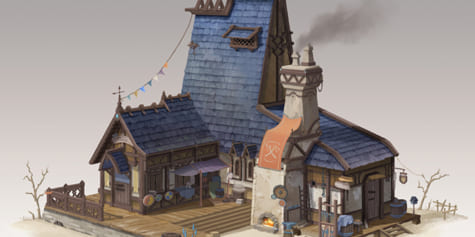
In this edifice design tutorial, concept artist Samantha Kung demonstrates how to comprise 3D models to build in the correct perspective. From silhouette thumbnails to painting in textures and small details, she uses the instance of a fantasy blacksmith workshop to demonstrate the chief themes.
In this tutorial, I will share the process of creating a fantasy blacksmith workshop from brainstorming to completion, as well every bit some techniques of rendering dissimilar materials.
Brainstorming
The first phase of whatever project is to do brainstorming and clarify the themes. Since I am going to design a fantasy blacksmith workshop from the medieval period, I start researching the functions of a blacksmith workshop, writing keywords, and expanding the ideas outward.
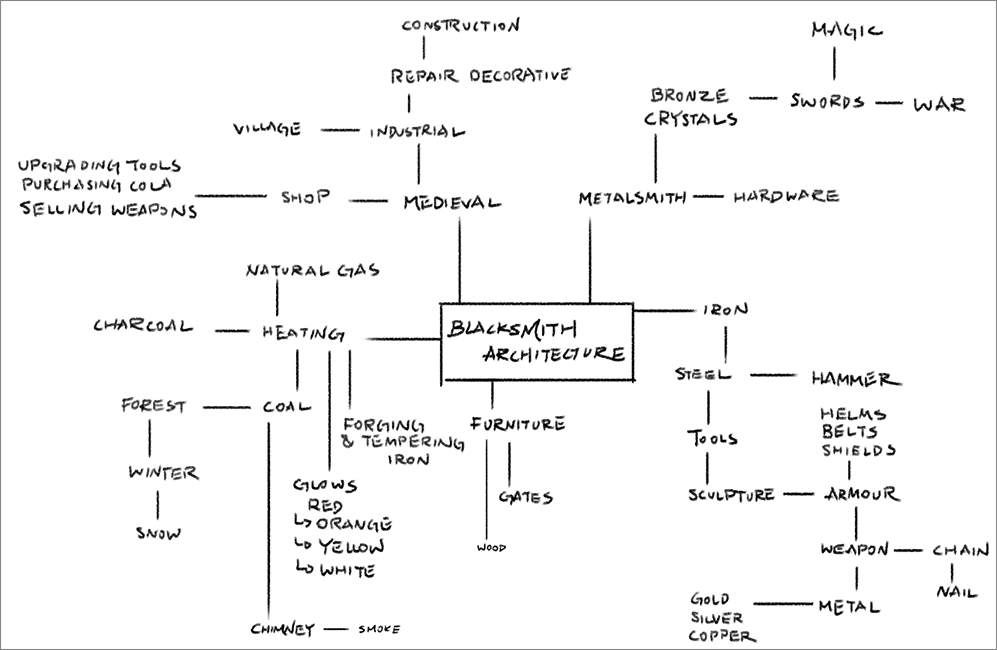
References
After that, I start looking for references. It is always bang-up to take your own photos and to go to real places to go a experience of the surround. However, in that location are no blacksmith workshops in my area, and then I collect the information and references on Google and Pinterest by typing the keywords like "blacksmith architecture." Although I'thou only designing the outside, I likewise assemble some interior photos to become a amend understanding of how blacksmiths arrange their tools in their workspace, besides as to analyze the architectural materials. The building is mainly synthetic from physical, brick, stone, and wood, which I will apply to my final design afterwards.
Silhouettes
After gathering all the basic information, I and then outset sketching and creating silhouettes. While doing the sketches, I keep these things in mind:
- How many levels does the building have?
- Is information technology located on a steep slope or flat land?
- Class Follows Function: It is necessary to include archway(s), chimney(south), and roof(due south).
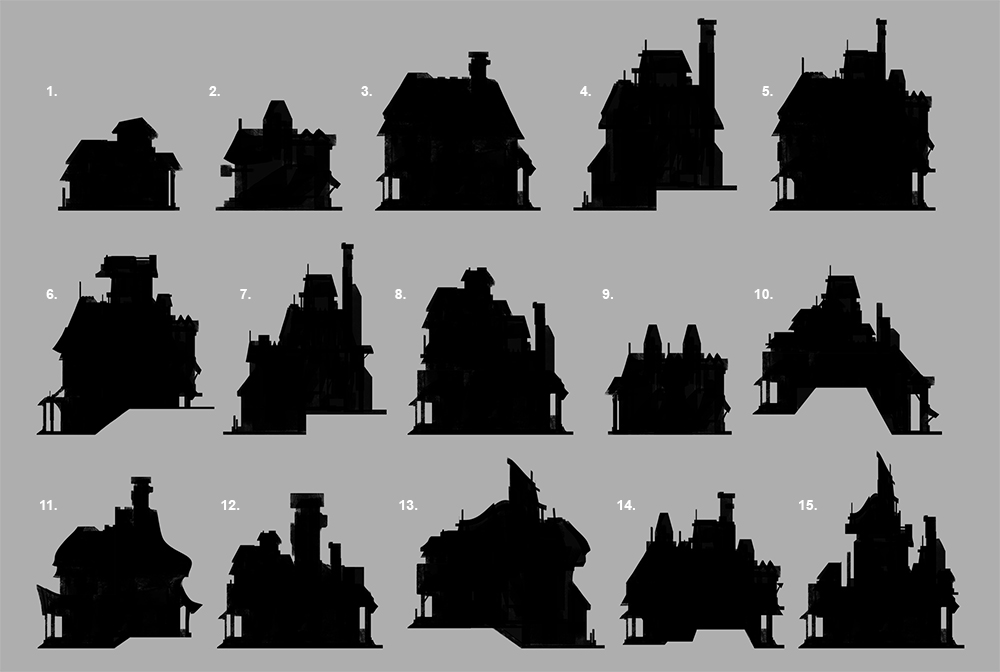
Rough Sketches
I cull five silhouettes from the above and add details, considering the master construction and different parts of the architecture. Although they wait flat, drawing the side views get-go can give me a better idea of exploring the outside design, picturing the facade of a house.
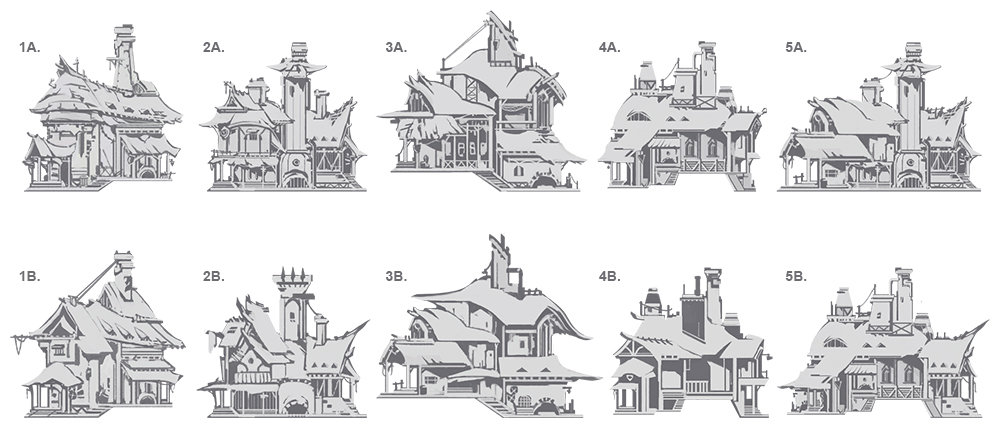
Thumbnails
The forms and proportions are even so changeable, and then it is better to focus on design and solve design problems at this phase. I build a simple 3D model in SketchUp to get the bones form. Before creating thumbnails, I write downwardly several keywords outset to give me a clear mind of the blueprint features as well as because the material choices. In department A, I want the blacksmith building to expect simple and have the basic features. And for section B, I add more functions: store (selling goods and weapons) + workshop, adding an outdoor trading space.
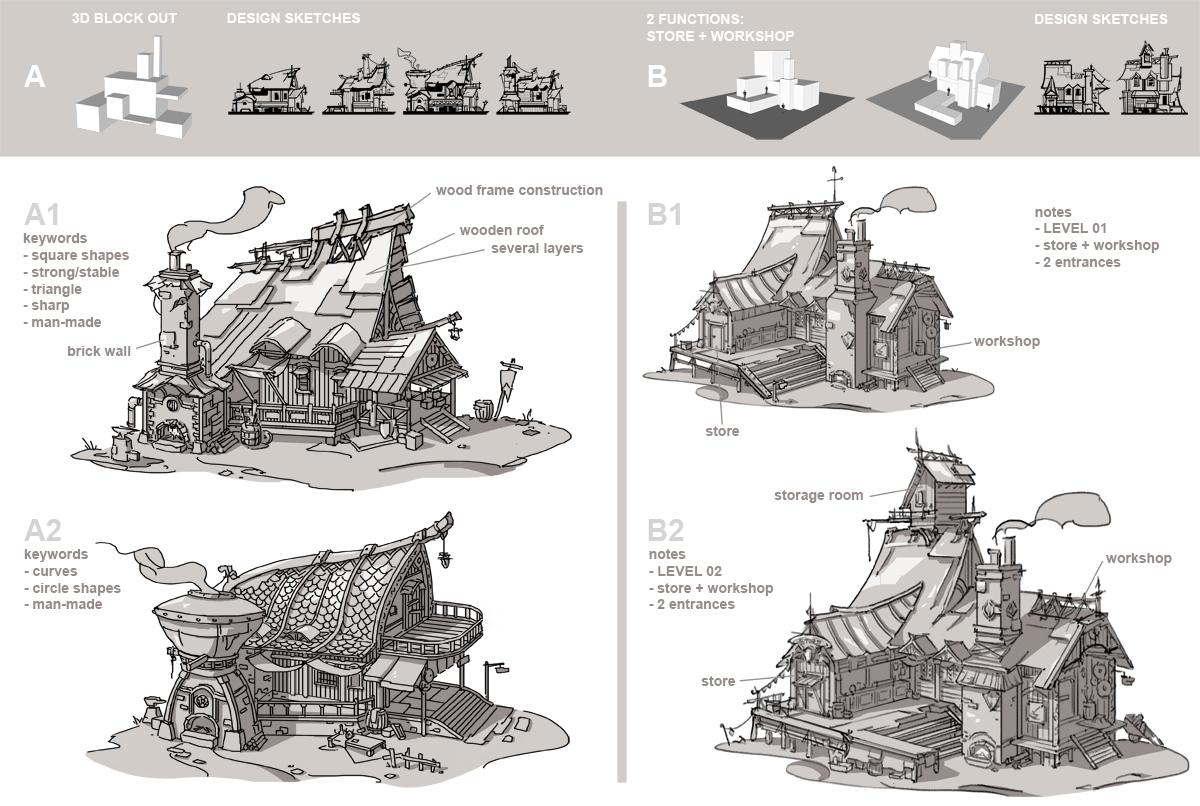
Click to expand image
Cake-out Final Shapes
Having created the thumbnails, I moved on to the final pattern, plotting out the basic form and shape in SketchUp, importing homo dummies for calibration. Information technology is necessary to make sure all the objects we interact with every 24-hour interval are in a reasonable size.
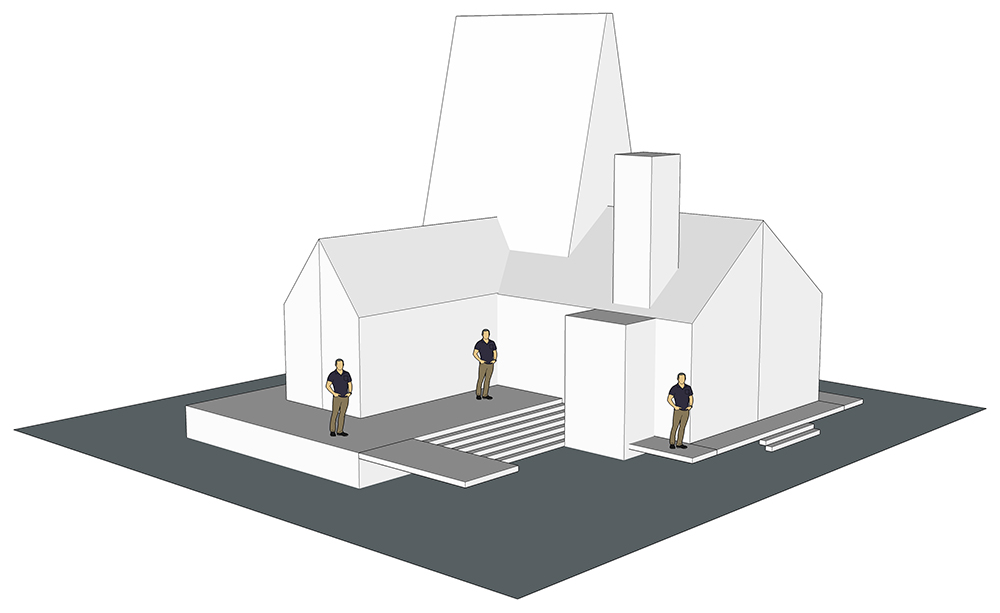
Set up Perspective Lines
Once the 3D model is done, I prepare up the two-point perspective for the side by side step to brand sure all the details I will draw later are in accurate perspective. Firstly, I draw a horizon line below eye level, and then that the top of the edifice will exist visible. Next, place the vanishing points (VP1 & VP2) on the horizon line using a small dot. Note that both vanishing points are out of the canvas. The last stride is to extend the lines from each vanishing point. When I've finished setting upwardly the perspective lines, it is time to start adding additional details.
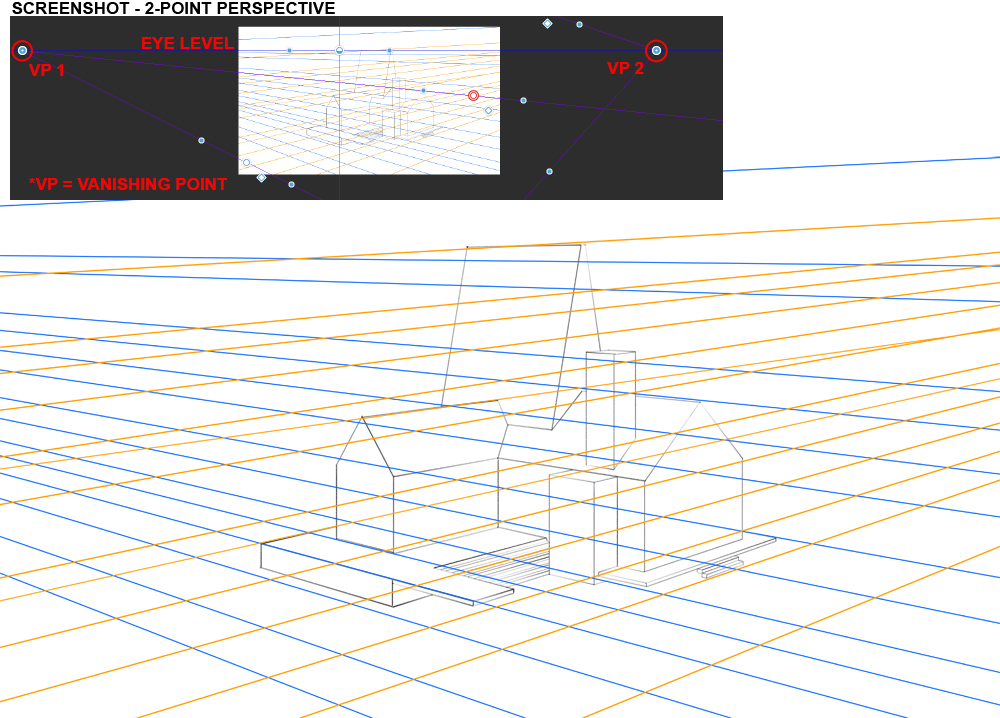
Notation:
Clip Studio Paint includes a perspective ruler tool for use creating concept fine art and comics. Y'all can set the perspective ruler and so that your lines automatically snap to the right perspective.
Merely go the the Layer menu > Ruler/Frame > Create Perspective Ruler to set up a two-point perspective ruler to aid your composition.
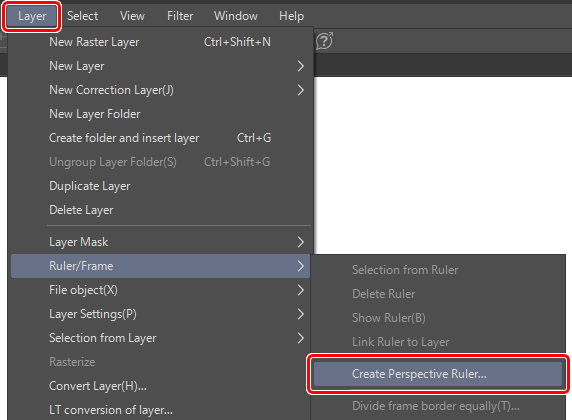
Draft Pattern
I farther develop the B2 thumbnail. My idea is to create a blacksmith building that is located in a dry out expanse and to sketch out the overall layout of how people interact in the space and go nearly their daily lives. Adding minor details adjacent to the building makes the design wait more complete and makes it easier to understand the environment of where the blacksmiths work.
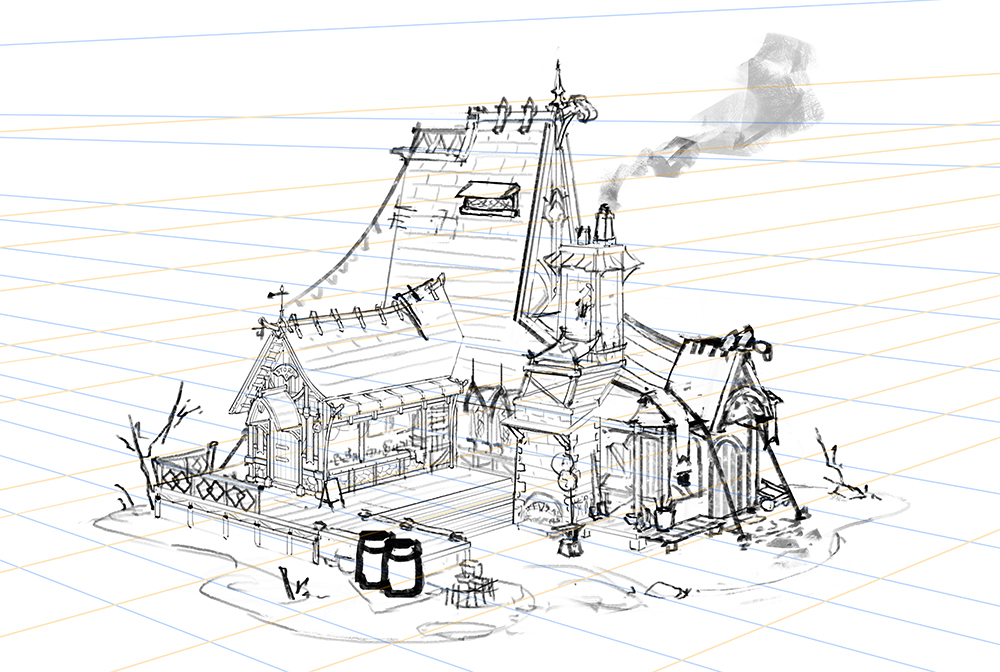
Final Lineart
After sketching the draft, I finalize the line work, thinking about the architectural structure and the details of the small-scale objects.

Design Principles
Pattern principles are all near contrast and the theory of Big, Medium and Small.
i. Detailed Areas VS Rest Areas
Residual the detailed and rest areas in the overall pattern, giving the viewer'southward eyes places to rest.
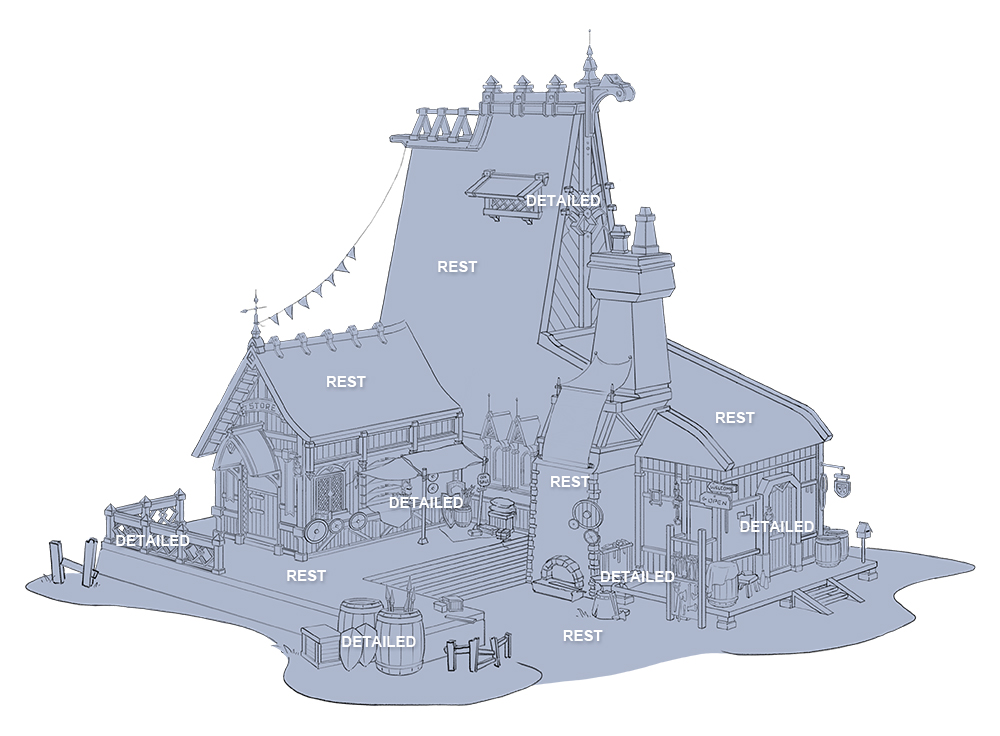
2. Overlap / Avoid Tangents
Pay attention to whatsoever overlapping edges and make it clear which shape is in front end and which is behind.

3. Repetition
Odd numbers create visual interest and give variety, while even numbers create symmetrical balance.
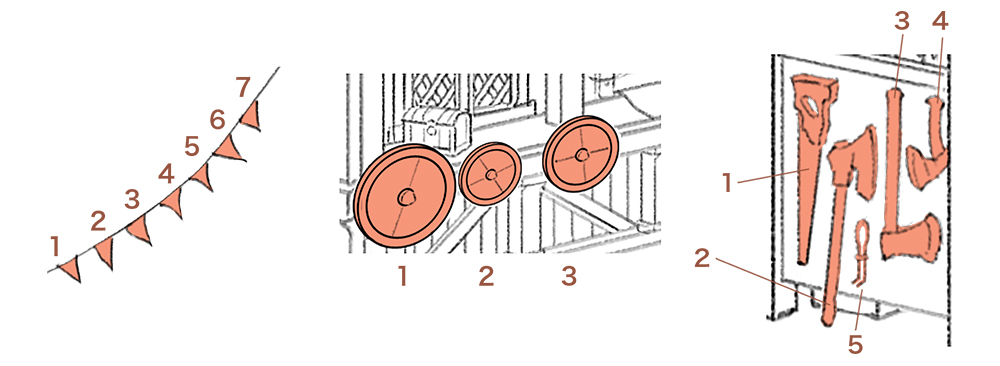
Material Studies
These photograph references were taken by me while travelling. Studying materials helps you visualize texture and more than closely explore the differences between materials. Each material has unique surface that captures lighting differently as well. The more I understand a material, the easier information technology is to recreate it in the rendering process.
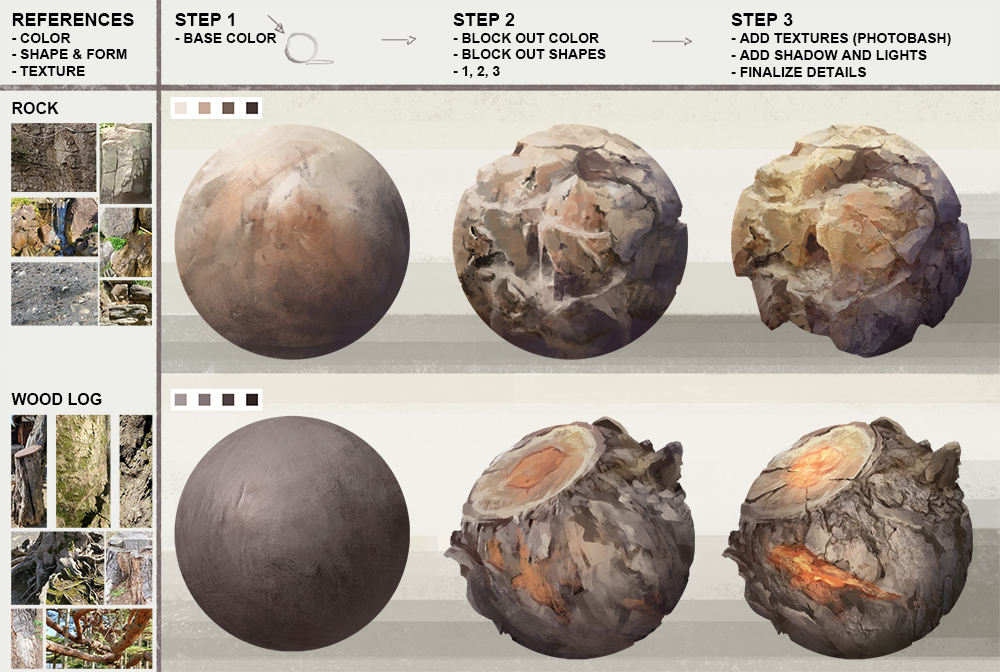
Color Sketches
I create color sketches before moving on to rendering. For selection A, everything is in the same color value, which I notice a flake dull and defective interest, while for option C, I am not quite satisfied with the purple as the colour looks too saturated. Therefore, I eventually choose B from these three options every bit the blue looks nearly harmonious to me.

Click to expand image
Base Colour
After picking the base color, I clean up the layers, separating each object into a different layer, renaming the layers as well. Past doing and so, the rendering later on will exist easier. One time I am washed with the layers, I'one thousand ready to remove the lineart.

Add Shadow and Lights
At this stage, I use the eyedropper tool to choose colors in color palette, rather than using the blending modes for the shadow and lights. It is sometimes challenging to command the color with blending modes as it is piece of cake to make the drawing appear dirty. Normally, I create 4 rectangles from loftier-value to low-value.
When I desire to add color, I add some blue to a hue and make certain the new color coordinates match the previous 1. You may look upwardly "color value guide" if you are not certain how to choose the right colors in a colour palette.
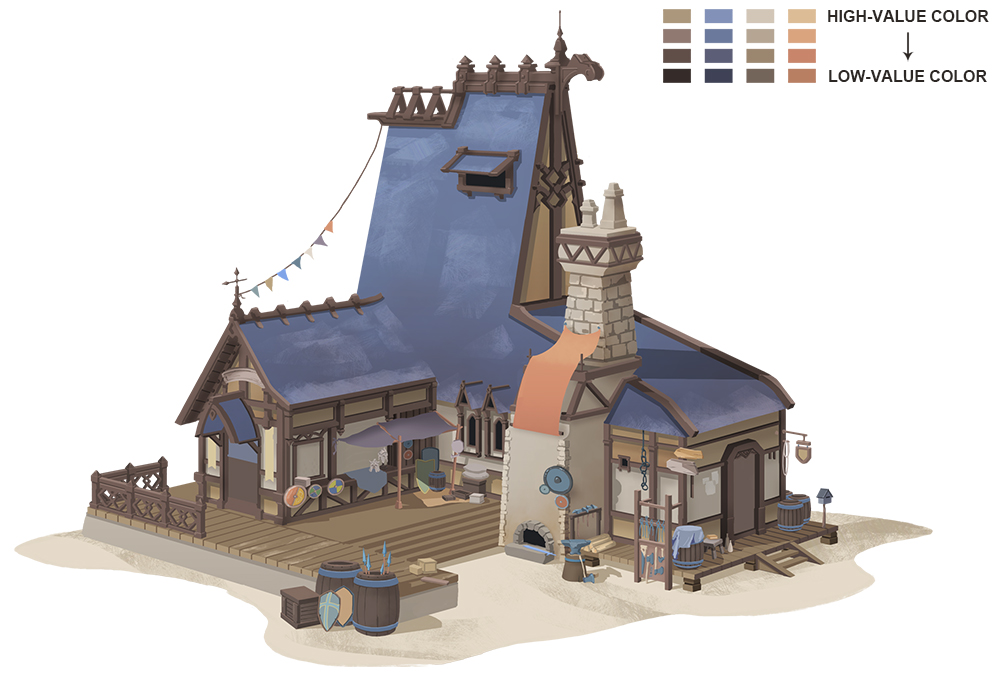
Add together textures
Next, I add textures using a mixture of photobashing (merging and painting photos into the illustration) and texture brushes. Before working on pocket-size details, you should wait at the cartoon every bit a big pic, to right the colour of the overall drawing and use blending modes in a subtle way.
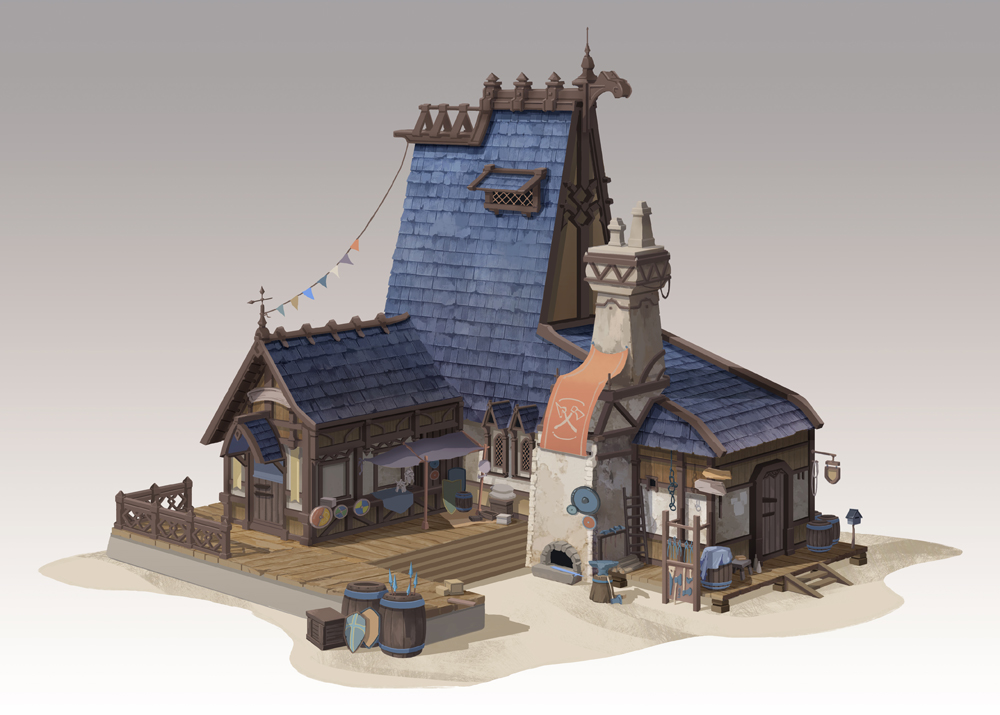
Finalize Details
The final step is to finalize the details and add more surroundings, making sure the color value of all the objects in the entire drawing fit the same surround. Then it's done!
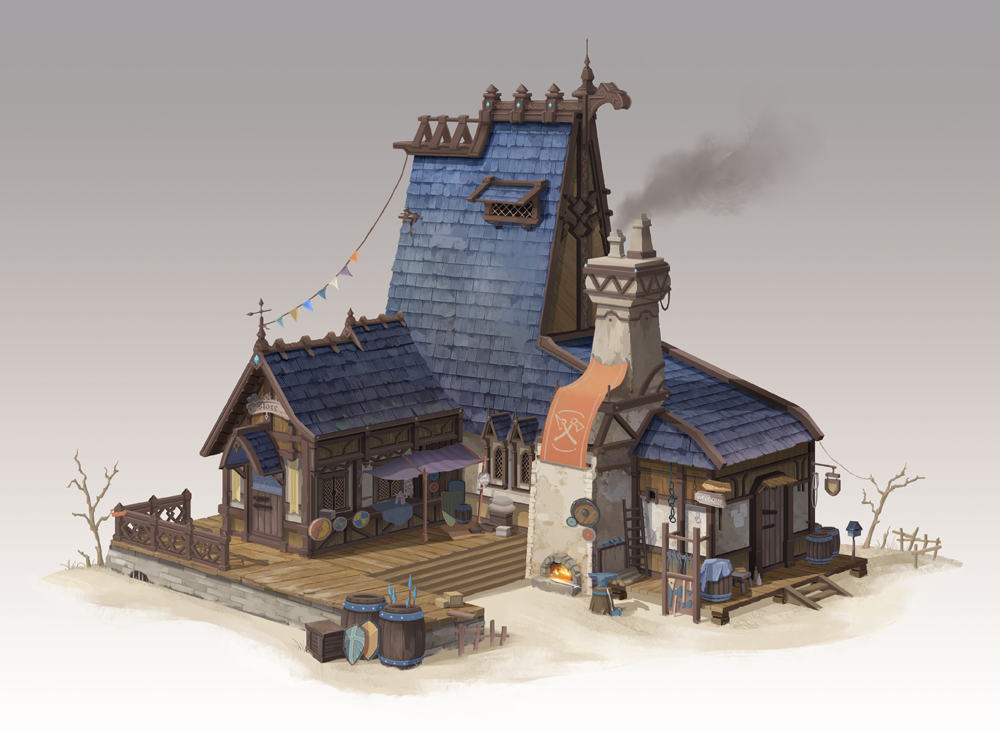
Source: https://www.clipstudio.net/how-to-draw/archives/160064
Postar um comentário for "how to draw 3d buildings tutorial"